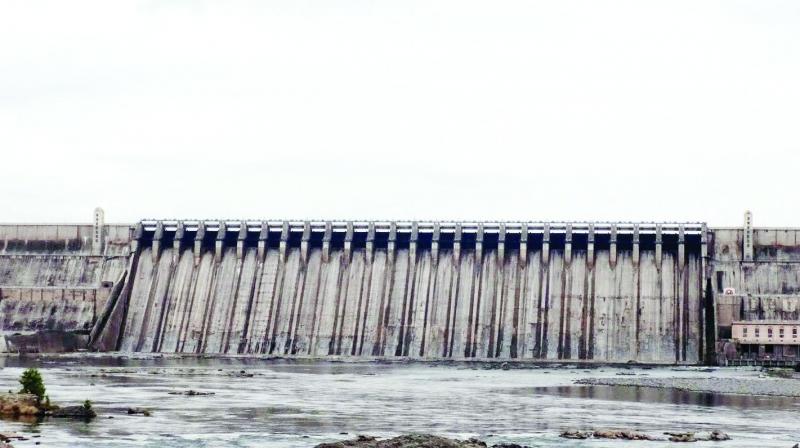Nagarjunasagar dam loses 25 per cent storage
Deforestation in the Krishna catchment area and urbanisation are said to be some of the reasons for increasing silt in the dam.

Hyderabad: The Nagarjunasagar dam has lost as much as 25 per cent of its storage capacity due to the accumulation of silt over the years.
The dam was built to hold 408.24 tmc ft of water. The Central Water Commission (CWC) which examined the dam using remote sensing techniques found that the capacity had dropped to 312 tmcft, a fall of nearly 100 tmc ft.
Deforestation in the Krishna catchment area and urbanisation are said to be some of the reasons for increasing silt in the dam.
It takes 264 tmc ft to provide irrigation for one crop season under Nagarjunasagar project through the left and right canals. Another 70 tmc ft of water is required to irrigate the Krishna delta and 100 tmc ft to meet the drinking water needs of Hyderabad and other districts.
According to calculations, 100 tmc ft could have irrigated 65,000 acres of paddy crop.
Nagarjunasagar project chief engineer S. Sunil said, “The silt has mainly accumulated at the dead storage level. If silt accumulates at the live strorage level, it is a matter of serious concern.”
He said officials were readying measures to immediately remove any silt that forms in the live storage level as it would impact the storage capacity. “We are taking up a plantation drive in catchment areas to ensure that silt does not flow from upstream ares,” he said.
The full reservoir level at Nagarjunasagar is 590 ft and minimum 490 ft. The dead storage level is between 246 ft and 490 ft, which earlier had a storage capacity of 166 tmc ft earlier. The live storage level which is from 490 ft to 590 ft used to have a storage capacity of 242 tmc ft.
The CWC study found that the capacity at dead storage level had shrunk to 133 tmc ft and live storage level to 175 tmc ft. The biggest concern is drop in storage capacity at live storage level by 67 tmc ft. The Central Water Commission studied 108 major dams across the country to assess the impact of accumulation of silt.
